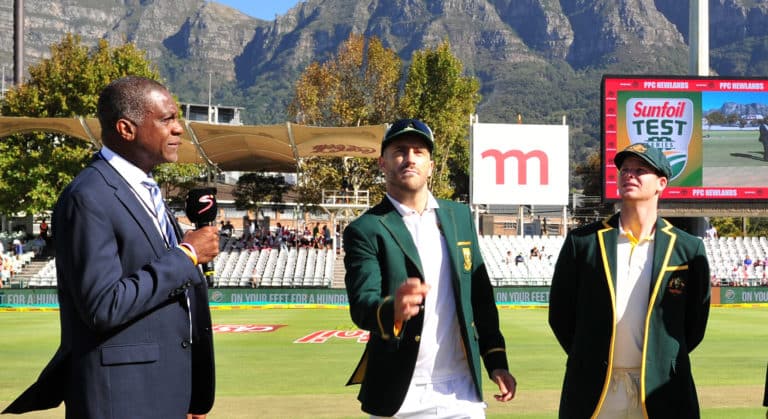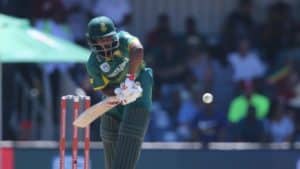In a bid to stop home teams manipulating their wickets and riding home-ground advantage, the ICC is considering scrapping the toss.
The visiting team will be given the choice of whether to bat or bowl first, according to how they see the conditions.
This system has been used in the English County Championship since the start of the 2016 season, although there the visiting team is merely given the choice of whether to bowl first, or opt for a toss of the coin if they are undecided.
According to briefing notes circulated ahead of the ICC cricket committee meeting at the end of May in Mumbai and seen by ESPNcricinfo, there is ‘serious concern about the current level of home team interference in Test pitch preparation.’
Apparently, though, the committee is divided on its implementation.
Former Australia coach Darren Lehman, is adamant that doing away with the toss would help Test cricket.
‘The biggest challenge to the longest format, for me at least, comes not from Twenty20 but from the surfaces on which matches are being played,’ Lehmann wrote in his autobiography. ‘Put simply, those surfaces are either far too bland or, conversely, are far too heavily weighted in favour of the home side. In both instances, that does Test cricket no good at all.
‘My solution to ensure the best possible pitches is, at international level, to do away with the toss, with the visiting side given the option of whether they want to bat or bowl. That way the result is not decided by the toss of the coin, host boards have a greater incentive to produce decent pitches that are fair to both sides and the chances are that after five days the better side – rather than the one that has called correctly and thus been able to take advantage of favourable conditions – is the one what will come out on top.’
The committee, which features Shaun Pollock, alongside such veterans of the game as Anil Kumble, Andrew Strauss, Mahela Jayawardene, Rahul Dravid, and umpire Richard Kettleborough, will decide on the proposal before the 28-29 May meeting.
The English experiment in 2016 resulted in changes. The ECB reported 85% of matches went into a fourth day compared to 74% in 2015 – the highest percentage since 2009. The average score for the first innings was 332, slightly up from 325 in 2015. The average score for the second innings of a match was 343, up from 290 in 2015. A total of 843 wickets were taken by spin in 2016, up from 752 in 2015. 71 of the 142 matches in both divisions were drawn, discounting two abandoned matches, meaning there was a positive result in the other 71 – whereas in 2015, there were 93 results and only 51 draws.
Photo: Ryan Wilkisky/BackpagePix





